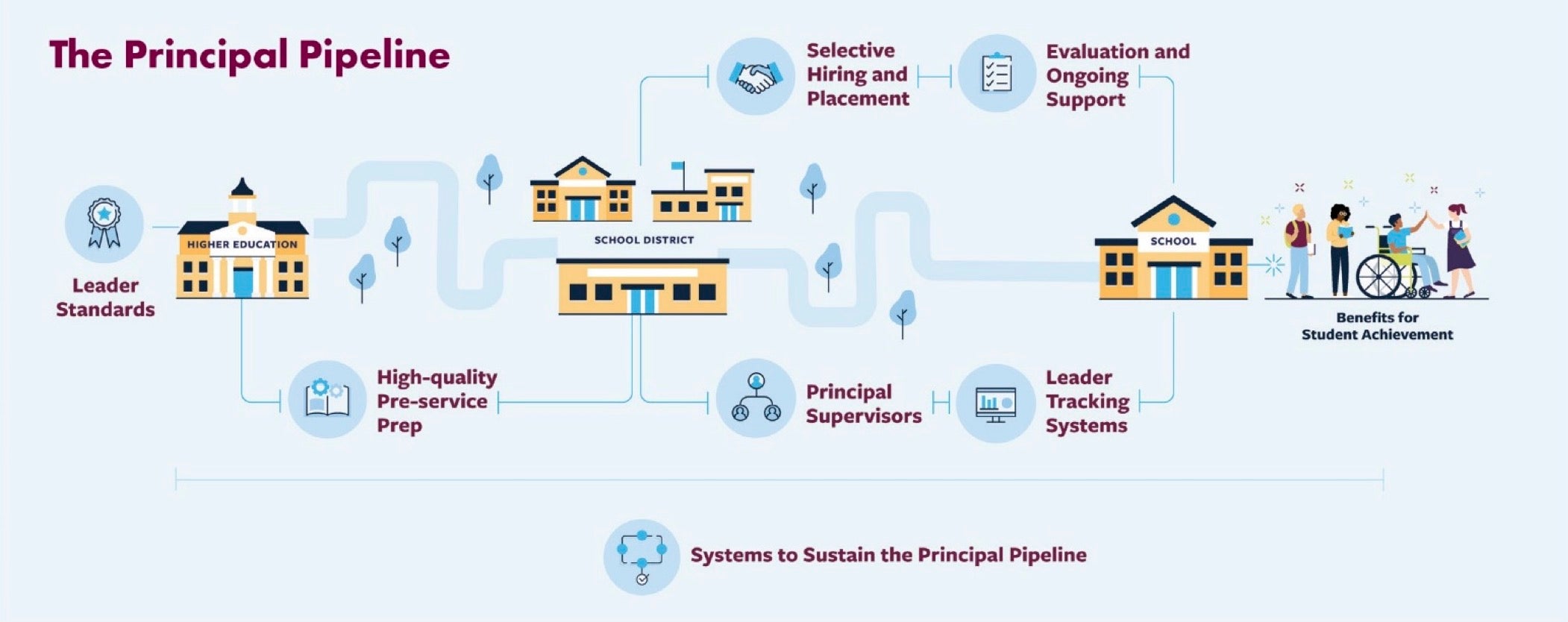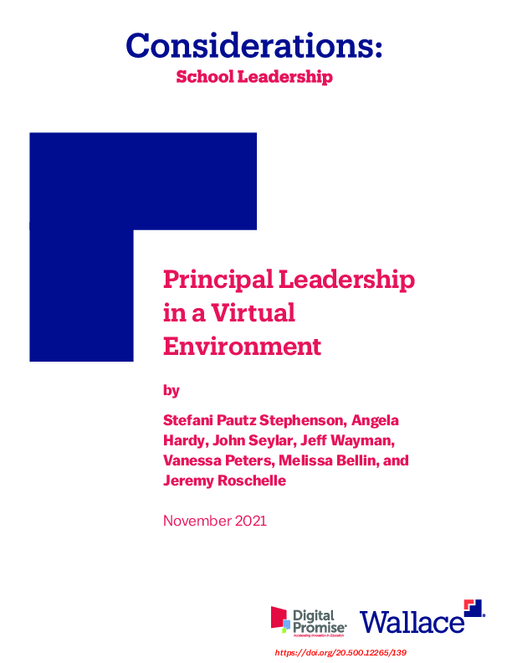Breadcrumb
- Wallace
- Reports
- Principal Leadership In A Virtua...
Principal Leadership in a Virtual Environment

- Author(s)
- Stefani Pautz Stephenson, Angela Hardy , John Seylar, Jeff Wayman, Vanessa Peters, Melissa Bellin , and Jeremy Roschell
- Publisher(s)
- Digital Promise
- DOI Link
- https://doi.org/20.500.12265/139
Summary
How we did this
Digital Promise developed the recommendations in this report through a research review and interviews. First, authors reviewed existing research on the intersections of school leadership, virtual learning, equity, and the seven parts of an effective principal pipeline. Second, in early 2021 they conducted interviews with 11 leaders from five school districts. These districts had been recognized by Digital Promise for sustaining powerful teaching and learning in the shift to virtual learning during the COVID-19 pandemic.
The COVID-19 pandemic brought a sudden, unexpected shift to remote learning. It also brought new awareness of the need for principals able to meaningfully and equitably integrate technology into the school day.
How can school districts develop a large corps of such principals? Research on the topic is still emerging and has a number of gaps. But this report by Digital Promise offers early considerations for decision-makers. Digital Promise is a nonprofit that works with districts and schools nationwide to use technology effectively.
Three Essentials for Equitable, High-Quality Digital Learning
The authors say three factors are important to ensure that digital learning is both equitable and high-quality. They call this “powerful learning.” The factors are:
- Technology is used meaningfully. Using technology can meet important learning goals. Done well, learning with technology does more than enable mastery of basic facts or reinforcement of skills. It can allow for genuine personal interactions. It can also provide unique opportunities for students. These include gaining understanding through serious games or interactive models and visualizations. Assistive technologies can support students with disabilities.
- Access to digital learning is inclusive. Teachers must be skilled in guiding learning through technology so that all students benefit. Students also need equitable access to that technology. This may include ensuring that devices and high-speed internet service are available at home.
- Principals know how to lead digital learning, which entails:
- Making informed choices about the technology most appropriate for the school’s population
- Earning teacher buy-in
- Aligning technology use with other school goals
- Setting a process in place to continuously improve the use of technology
Considerations for District Leaders
Districts may want to develop more principals able to lead virtual or other digital learning. The report discusses three areas for district leaders to consider:
- The specific competencies a principal needs
- On-the-job-supports a district must provide
- How to develop a large number of principals skilled at leading this type of learning
Developing Digital Learning Leadership through a Principal Pipeline
Research has found that principal pipelines with seven key components can help school districts develop effective leaders for a large number of schools. The first of these components is a set of rigorous standards for the principal’s job. Other components are high-quality preservice training for aspiring principals and strong evaluation and supports for sitting principals.
Districts can embed digital learning expertise into the pipeline parts. The report explains how. For example, standards could align digital learning with a district’s overall goals for high-quality teaching and learning. Preservice programs could work to ensure that their curriculum meets the digital learning needs of district schools.
This publication is part of an occasional Wallace series titled Considerations. Wallace invites leading scholars and other experts to share insights based on research and theory. These insights are on issues important to the fields Wallace supports.
Key Takeaways
- Technology can help districts meet important learning goals. Done well, instruction with technology does more than teach basic facts or reinforce skills. It can include serious games or interactive models. It can promote genuine personal interaction. Assistive technologies can support students with disabilities.
- Digital learning is high quality when three conditions are met. First, technology needs to be used meaningfully. Second, all students need equitable access to the technology. Third, principals need to know how to lead teachers to use it.
- Principals need skills and knowledge to lead digital learning. They need to know how to 1) select appropriate technology; 2) earn teacher buy-in; 3) align use of technology with school goals; and 4) continually improve the use of technology.
- Districts should consider how to develop principals who can lead digital learning. Leading digital learning is a competency that can be developed as part of a district’s principal pipeline.
Visualizations



